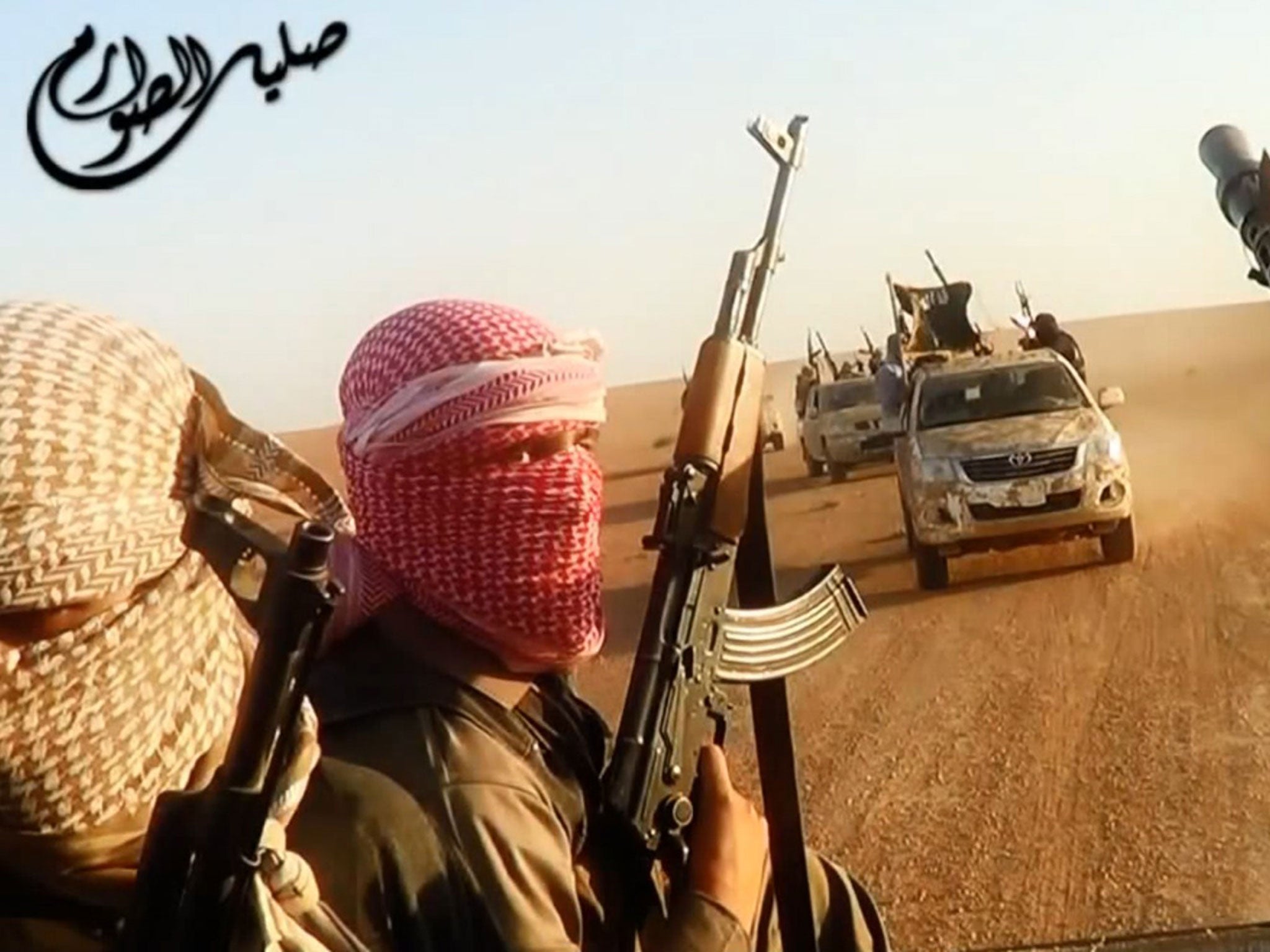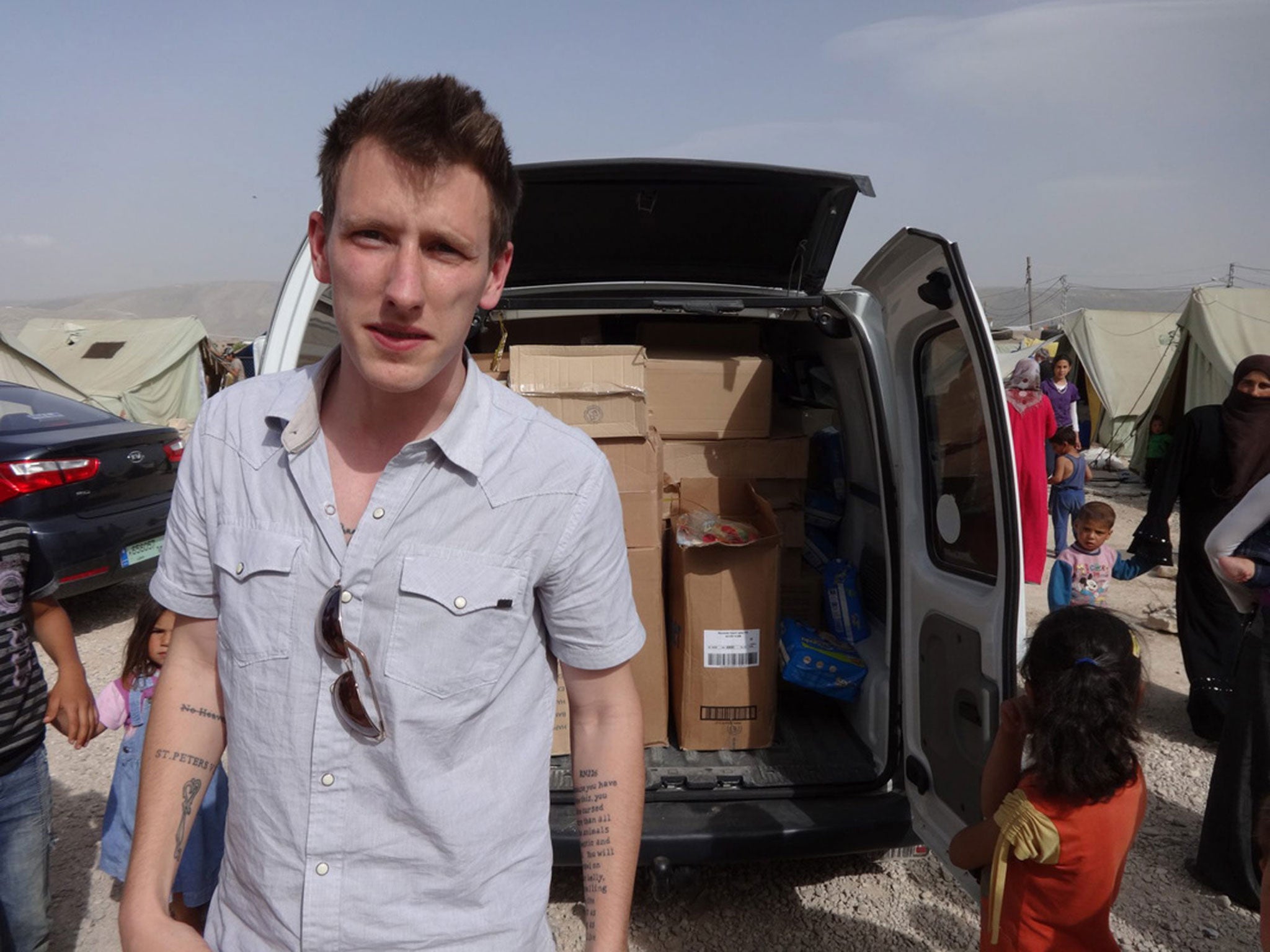Peter Kassig beheading: A new Isis video, but a different ending. What could it mean?
American hostage Peter Kassig and 14 Syrian soldiers are shown meeting the same fate as other captives. But intelligence agencies will be poring over the apparently significant discrepancies between this and previous films

The video that appeared on Sunday confirmed to show the head of the American aid worker Peter Kassig at the feet of a hooded killer of Isis is at once similar and dissimilar to the tapes we have seen before announcing the killing of Western hostages. Common to all of them is their savagery.
Mr Kassig, who fought in Iraq before forming his own humanitarian group ferrying emergency supplies to victims of the Syrian war from a base in Turkey, appeared at the end of the last tape, which, on 3 October, confirmed the death of the British aid worker Alan Henning. Mr Kassig was next in line, it warned. Until then only the US authorities and his family had known he had been taken captive.
Such was the outrage at the murder of Mr Henning there was some notion that those responsible would reconsider their strategy. His was the fourth of the videos, each showing the murder of one hostage and announcing the next in line to meet their end. Before Mr Henning, the world had learnt of the killing of US journalists James Foley and Steven Sotloff and a British aid worker, David Haine.
Whatever may have changed, it did not help Mr Kassig. Yet the clear differences between the tape announcing his murder and the four that came before were striking and raised several questions. It does not show Mr Kassig being killed nor does it feature him, as was the case in the previous videos, making a last statement to the camera. Nor this time was a new captive identified for execution in the future.
Lasting 16 minutes, the latest footage again attempts high production techniques as it meanders through the history of the birth of Isis and its growth into the force it is now, straddling parts of Iraq and Syria. There is a narration with English subtitles as well as a soundtrack.
The makers of the video have gone to particular lengths to prolong and dramatise a section at its heart showing about 14 men in blue jumpsuits described as Syrian pilots and officers being led by the scruff of their necks by Isis fighters into what appears to be an olive grove. Finally each fighter forces their prisoner to the ground and saws through their necks with serrated daggers.
There were similar attempts at sophistication in the previous tapes. The moments when each of the men was making his last statement before being killed were shot with different cameras from multiple angles. Yet here, the footage at the tail end of this tape showing what they claim is the head of Mr Kassig seems hastily shot in bad lighting and taken with only one camera.

It will be the task of the US and British intelligence agencies to understand what this could mean. Is it possible that Mr Kassig had attempted to escape, making the usual staged last statement and beheading impossible? And while much of the footage that comes before seems more professionally shot and edited, does the less-scripted end suggest that its makers were suddenly sent on the run?
As before, prominent in footage both of the execution of the Syria men is the British-accented individual in a black hoody, widely nicknamed “Jihadi John”. The US intelligence services have said they now have the man’s identity though he has not yet been caught. But there have been media reports that he may have been among Isis combatants injured by a coalition air strike on one the group’s convoys nearly 10 days ago. If so, was this tape made before those strikes and what has become of Jihadi John now?
Mr Kassig was driving an ambulance with medical supplies from the base of his humanitarian group across the border in southern Turkey when he was seized on 1 October last year. He eventually found himself sharing cells in Raqqa, the capital of Isis’s self-declared caliphate, along with other Western hostages including Mr Henning and Mr Haines and the two US journalists.
Among those speculating that Mr Kassig may have resisted his captors or tried to escape was French terrorism expert Jean-Charles Brisard.
“Obviously there was something that happened during the filming”, Mr Brisard said, adding, “We know that the past executions were filmed from multiple perspectives, so perhaps something happened here that prevented them from doing so,” he told The New York Times.